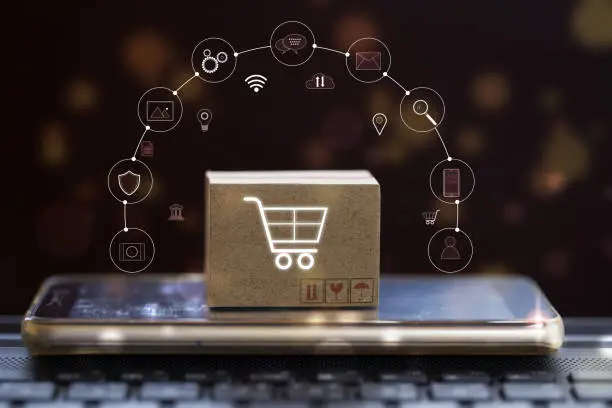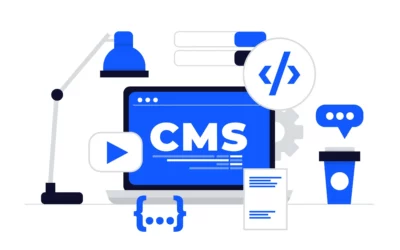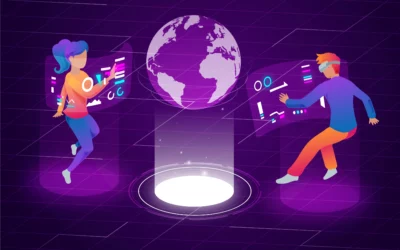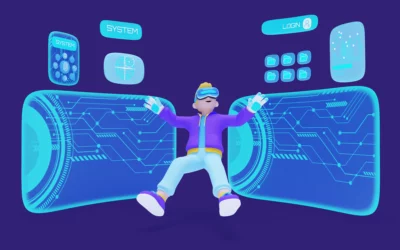The retail industry, like many others, is constantly undergoing transformation, and with the rapid emergence of new technologies, it’s crucial for businesses to stay up-to-date with the latest trends. In this article, we will explore the most significant retail technology trends in 2024 that are reshaping the industry.
AI-Powered Customer Experiences
1.1 The Role of AI in Retail
Artificial Intelligence (AI) has become the driving force behind customer-centric retail. AI-powered solutions enable retailers to offer personalized experiences, optimize supply chains, and enhance customer service. Machine learning algorithms analyze customer data to provide insights that empower retailers to make informed decisions.
1.2 Personalized Recommendations
AI is revolutionizing how customers shop. With AI algorithms, retailers can offer personalized product recommendations based on past purchases and browsing behavior. This not only improves the shopping experience but also boosts sales and customer satisfaction.
Personalized Shopping
1.1 Customized Shopping Experience
In 2024, personalization takes center stage. Retailers are increasingly offering customized shopping experiences, where customers can tailor products to their preferences. This level of personalization fosters brand loyalty and repeat business.
1.2 Loyalty Programs
Retailers are using data analytics to create more effective loyalty programs. These programs offer rewards tailored to individual customer preferences, which makes them more enticing and drives customer retention.
Virtual Reality and Augmented Reality
1.1 Enhancing In-Store Experience
Virtual reality (VR) and augmented reality (AR) are changing the way customers interact with products. Customers can visualize furniture in their homes or virtually try on clothes, Lens etc. This technology not only increases engagement but also reduces product returns.
1.2 Try Before You Buy
AR allows customers to experience products before purchasing. For example, home improvement stores use AR to show customers how a paint color would look in their homes, making the buying process more confident and satisfying.
Smart Stores
1.1 IoT Integration
Smart stores are integrating the Internet of Things (IoT) to offer a seamless shopping experience. IoT devices monitor inventory levels, automate temperature control, and track customer foot traffic to enhance the shopping environment.
1.2 Enhanced Security
Retailers are also using IoT devices to bolster security. Smart surveillance systems can identify suspicious behavior and notify security personnel in real time, reducing theft and ensuring a safer shopping environment.
Mobile Technologies
1.1 Mobile Payments
Mobile payment methods, such as digital wallets and contactless payments, are gaining popularity. Customers appreciate the convenience and security of mobile payments, and retailers are embracing these technologies to streamline the checkout process.
1.2 In-Store Navigation Apps
Mobile apps with in-store navigation features are assisting customers in finding products more efficiently. These apps also provide real-time promotions and discounts, further enhancing the shopping experience.
Datafication
1.1 Data-Driven Decision-Making
Retailers are collecting vast amounts of data, and in 2024, they’re making more use of it than ever. Data analytics drive decision-making processes, helping retailers optimize inventory, pricing, and marketing strategies.
1.2 Customer Insights
By analyzing customer data, retailers gain valuable insights into preferences and behavior. This enables them to create targeted marketing campaigns and offer products that align with customer expectations.
Conclusion
The retail industry is undergoing a significant transformation in 2024, driven by a wave of technological innovations. Retailers are embracing AI, VR, AR, IoT, and mobile technologies to enhance customer experiences and operational efficiency. The fusion of these technologies is shaping the future of retail, and businesses that adapt are positioned for success in this dynamic landscape.
FAQs
How does AI personalize the shopping experience?
AI personalizes shopping by analyzing customer data and offering tailored product recommendations based on past behavior and preferences.
How is AR reducing product returns in retail?
AR allows customers to virtually try products, such as clothes or furniture, before purchase, reducing the likelihood of unsuitable purchases and returns.
What are the benefits of IoT integration in smart stores?
IoT integration improves inventory management, enhances the shopping environment, and increases security in smart stores.
How are mobile payments simplifying the shopping process?
Mobile payments offer convenience and security, streamlining the checkout process for both customers and retailers.
How is data-driven decision-making improving retail strategies?
Data-driven decision-making optimizes inventory, pricing, and marketing strategies by providing insights into customer preferences and behavior.





